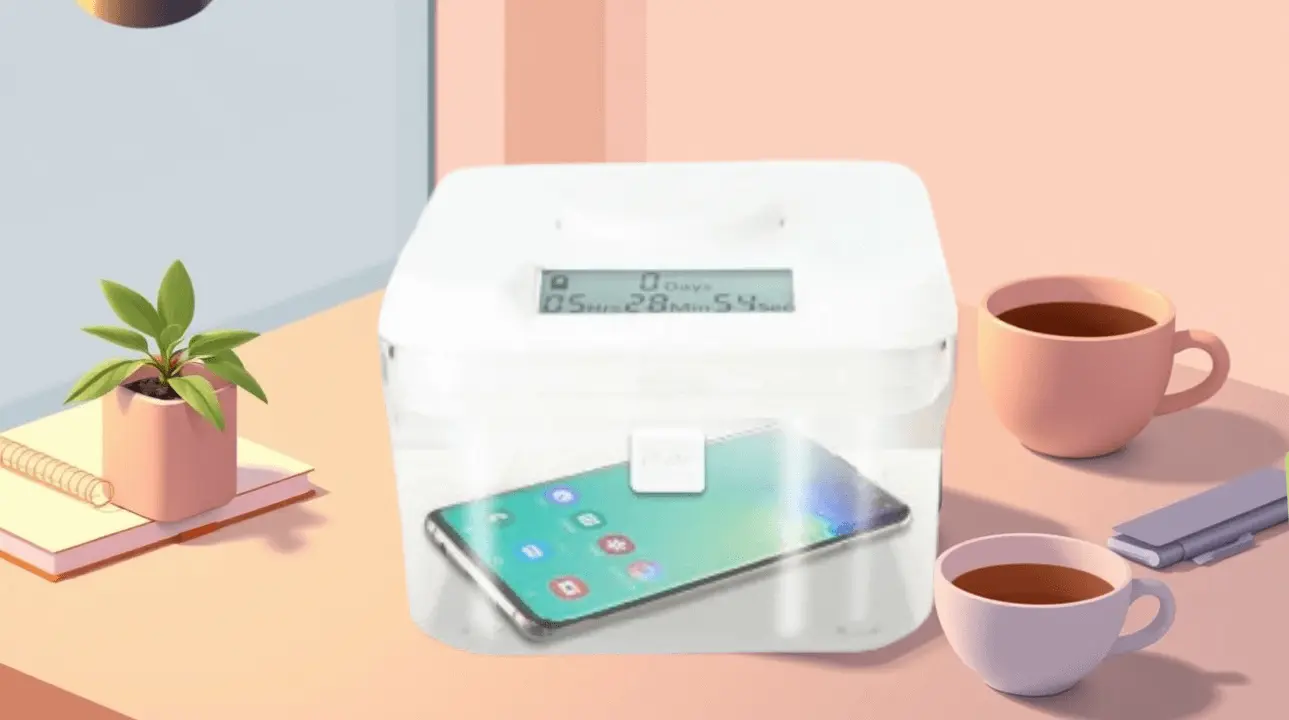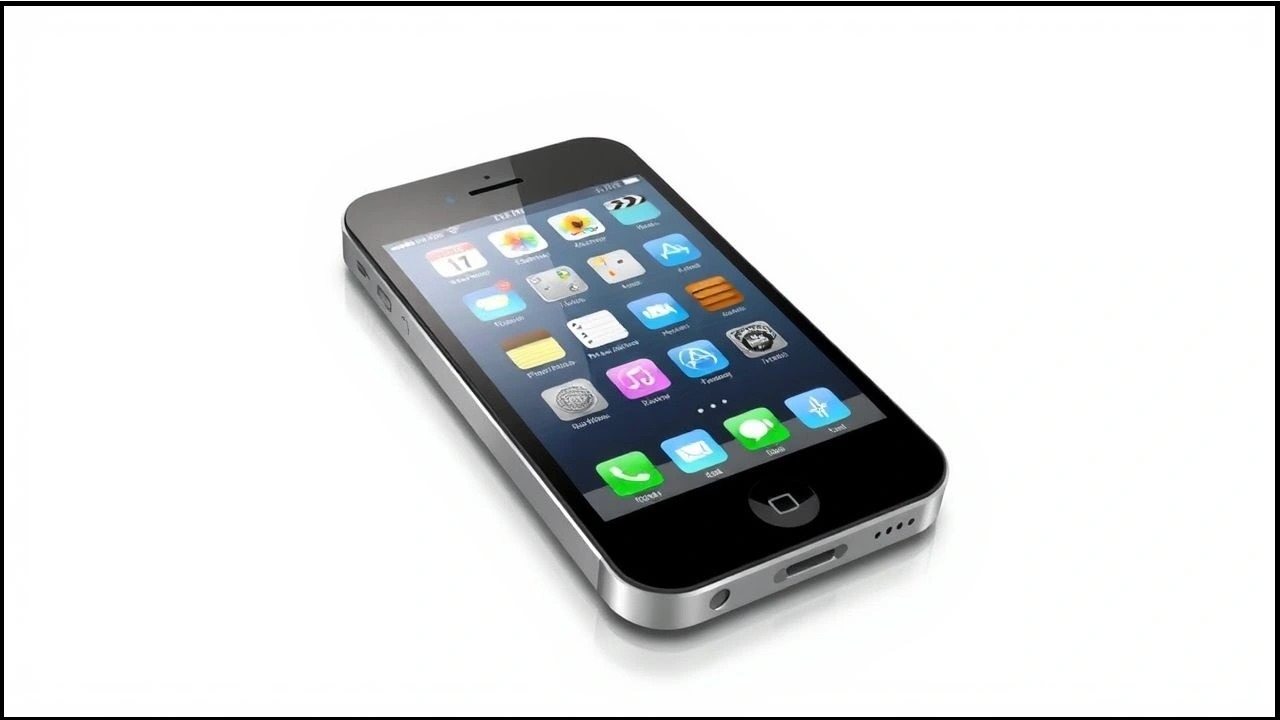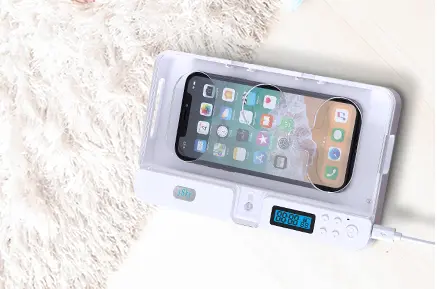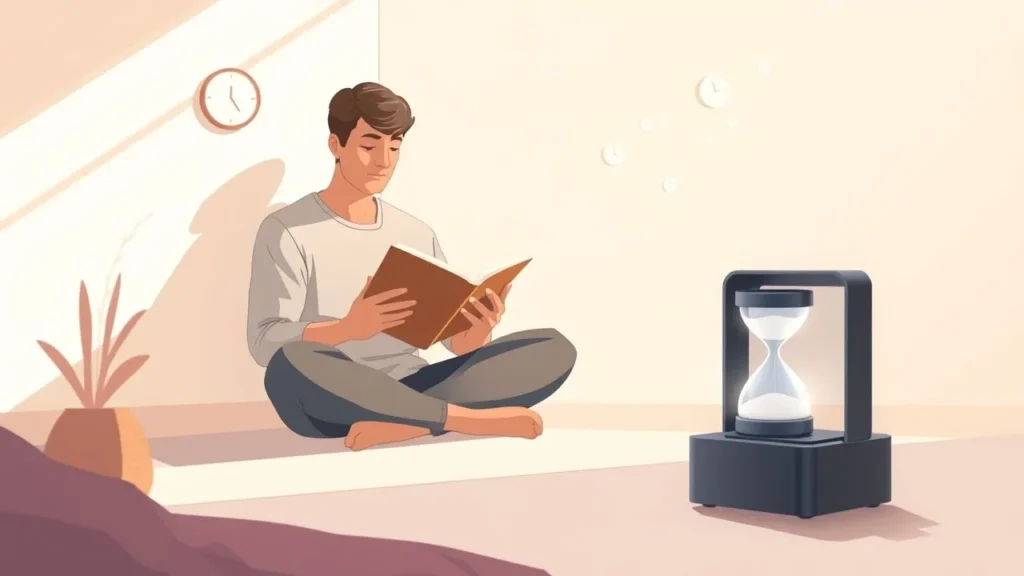
Remember when the biggest phone distraction was accidentally pocket-dialing someone? Those days feel like ancient history now. Today, the average American checks their phone over 200 times a day, that’s once every five minutes while we’re awake. And a recent study shows that 57% of Americans admit they’re addicted to their phones, with nearly half experiencing anxiety when separated from their devices.
Enter the phone lock box: a simple container that’s become the unlikely hero in our battle against digital distraction. But how did we get here? How did a quirky kitchen gadget evolve into a mainstream wellness tool that millions now consider essential? Let’s dive into the fascinating journey from novelty to necessity.
The Pre-Smartphone Era: When Phones Stayed Put (1990s-2007)
Before we talk about locking phones away, let’s remember when that wasn’t even a thought. In the ’90s and early 2000s, phones had one job: making calls. Your landline was literally locked to the wall, and your chunky Nokia was for emergencies and the occasional game of Snake.

The concept of “phone addiction” didn’t exist because phones weren’t addictive. They were tools, not entertainment centers. You couldn’t scroll through endless feeds, binge-watch videos, or get sucked into a TikTok rabbit hole. The most distracting thing your phone could do was ring at an inconvenient time.
This era set the baseline for what “normal” phone behavior looked like. Phones stayed in pockets, purses, or on tables. They didn’t demand constant attention because they simply weren’t designed to capture it.
The iPhone Revolution: Everything Changes (2007-2010)
Then Steve Jobs walked onto a stage in 2007 and changed everything. The iPhone wasn’t just a phone; it was a computer, camera, music player, and internet browser all rolled into one sleek device. For the first time, a phone was genuinely entertaining.

The first signs of trouble appeared almost immediately. People started checking email obsessively, playing games during meetings, and scrolling through early social networks like Facebook. The term “CrackBerry” was already floating around for BlackBerry users who couldn’t stop checking messages.
But we were still in the honeymoon phase. Most people saw smartphones as incredible productivity tools rather than potential problems. The idea that you’d need to physically lock your phone away seemed absurd. Why would you want to separate yourself from such an amazing device?
The Birth of Physical Phone Barriers (2011-2014)
The first phone lock boxes didn’t start as phone lock boxes at all. They were created to solve a different self-control problem: food. Kitchen safes and timed containers had been around for years, helping people avoid late-night snacking or stick to portion control.
But as smartphones became more addictive, creative users started repurposing these food containers. Online forums began buzzing with DIY solutions: “I put my phone in my Kitchen Safe and set it for 2 hours so I could study without distraction.”
The real breakthrough came in 2014 when Kitchen Safe (now kSafe) appeared on the TV show Shark Tank. While their product was originally designed for cookies and chips, the entrepreneurs mentioned that people were using it for phones, keys, and other tempting items. They secured funding and suddenly had a platform to reach millions of viewers.

This was the “novelty” phase. Lock boxes were seen as extreme solutions for people with serious self-control issues. The general reaction was often laughter: “You actually need to lock your phone away? Just put it in another room!”
Social Media Explosion and Growing Awareness (2015-2018)
But “just put it in another room” stopped working as phones got smarter and more addictive. Instagram launched Stories, Snapchat introduced streaks, and endless-scroll feeds became the norm. Phones transformed from occasional distractions into dopamine-dispensing machines designed to capture and hold attention.
The first serious research on smartphone addiction began appearing during this period. Studies started linking excessive phone use to anxiety, depression, and sleep problems. Terms like “nomophobia” (fear of being without your phone) entered mainstream vocabulary.
Lock box manufacturers took notice. Products evolved from repurposed food containers to phone-specific designs. Companies like ySky and others began creating transparent cases that could hold phones while still allowing emergency calls. The market was small but growing, driven by early adopters who recognized the problem before it became socially acceptable to admit.
This was still largely seen as a niche solution. Most people viewed lock boxes as gadgets for “extreme cases,” people with serious addiction problems or helicopter parents trying to control their kids’ screen time.
The Tipping Point: Mainstream Recognition (2019-2021)
Three major factors converged to push phone lock boxes from niche to mainstream:
The Wellness Movement: Digital detox became trendy. Celebrities and influencers started talking openly about their phone addiction and the tools they used to combat it. Lock boxes went from embarrassing admission to wellness badge of honor.
COVID-19 Impact: The pandemic accelerated our phone dependence. With remote work, online learning, and social isolation, screen time skyrocketed. According to one study, internet addiction increased significantly during the pandemic, and people desperately sought solutions.
Yondr’s Success: Founded in 2014 by Graham Dugoni, the company Yondr pioneered phone-free spaces, first in nightclubs and concert venues before expanding to schools and corporate events. High-profile partnerships with artists like Dave Chappelle and John Mayer brought phone-free experiences into the spotlight.
By 2021, using a phone lock box was no longer seen as extreme. It was smart, proactive self-care.
The Evolution of Technology and Features
As demand grew, so did innovation. The simple kitchen timers of the early days evolved into sophisticated locking systems with features that addressed real user needs:
Emergency Access: Early lock boxes were all-or-nothing affairs. Newer models like the ySky offer limited emergency unlocks, balancing commitment with safety concerns.
Charging Capabilities: Recognizing that phones need power even when locked away, manufacturers added charging ports and cable slots.
Signal Blocking: Premium options like the Yondr Home Tray go beyond physical barriers, using Faraday fabric to block all cellular, Wi-Fi, and Bluetooth signals.
Multiple Locking Modes: Modern boxes offer different levels of restriction. The Mindsight Lock Box, for example, has both a flexible mode with override codes and a strict “Fortress Mode” with no escape hatch.
Size Variety: From single-phone portable cases to family-sized containers that can hold multiple devices plus gaming controllers and tablets.

Market Explosion: From One to Many (2022-Present)
Today’s phone lock box market is booming. What started with essentially one product (the Kitchen Safe) has exploded into dozens of brands competing across different price points and feature sets:
- Budget Options: Basic timer boxes starting around $20
- Mid-Range Leaders: Feature-rich options like Mindsight and ySky in the $40-60 range
- Premium Solutions: High-end signal-blocking containers reaching $200+
With so many options, from basic timers to advanced smart boxes, choosing the right one can be overwhelming. For a detailed comparison, check out our guide to The 9 Best Phone Lock Box Timers.
The market has segmented to serve different needs:
- Students: Portable, single-phone cases for study sessions
- Families: Large-capacity boxes for device-free dinners and bedtime routines
- Professionals: Office-appropriate designs for focused work sessions
- Therapy and Wellness: Clinical-grade options for addiction treatment programs
Cultural Shift: The New Normal
Perhaps the most remarkable change is how normal phone lock boxes have become. They’re no longer admissions of weakness; they’re signs of self-awareness and intentional living.
In Schools: A Common Sense Media report (2023) found that 97% of students aged 11–17 use their phones during school hours, with an average of 43 minutes per day, about a full class period spent on mobile devices. leading many schools to adopt phone-free policies using lock boxes or pouches.
In Therapy: Mental health professionals increasingly recommend lock boxes as part of digital wellness treatment plans.
In Corporate Settings: Companies use them in meeting rooms and focus areas to improve productivity and engagement.
In Families: With studies showing that 47% of parents believe their child has a smartphone addiction, family lock boxes have become common tools for screen time management.
The stigma has flipped. Instead of “Why do you need that?”, the question has become “Where did you get yours?”

The Psychology Behind the Success
Why do physical lock boxes work when digital solutions often fail? The answer lies in human psychology:
Commitment Devices: Lock boxes are what behavioral economists call “commitment devices”, tools that help us stick to decisions our future selves might want to abandon. Unlike app-based restrictions that can be overridden with a few taps, physical barriers create real friction.
Out of Sight, Out of Mind: Research from the University of Chicago shows that simply seeing your phone can reduce cognitive performance, even when it’s turned off. Opaque lock boxes eliminate this visual trigger entirely.
Ritual and Intention: The physical act of placing your phone in a box and setting a timer creates a ritual that reinforces your commitment to focus or disconnect.
Social Signaling: A lock box on your desk or table signals to others (and yourself) that you’re serious about being present and focused.

What’s Next: The Future of Phone Lock Boxes
As we look ahead, several trends are shaping the next generation of phone lock boxes:
Smart Integration: Future lock boxes might sync with productivity apps, automatically locking when you start a focus session or study block.
Biometric Features: Advanced models could use fingerprint or facial recognition for emergency access while maintaining commitment strength.
AI-Powered Timing: Boxes might learn your patterns and suggest optimal lock times based on your productivity and stress levels.
Community Features: Social aspects like shared family lock times or competitive elements with friends could gamify the experience.
Workplace Integration: As remote work continues, expect more sophisticated professional-grade solutions for home offices and corporate environments.
The Irony We Can’t Ignore
There’s something beautifully ironic about our journey with phone lock boxes. We created the most advanced communication devices in human history, filled them with artificial intelligence and sophisticated algorithms designed to capture our attention, and then… we had to invent simple boxes to hide them from ourselves.
We’ve come full circle in a way. Just like phones used to be tied to walls and desks, we’re once again physically constraining our devices. The difference is that now it’s a choice a conscious decision to reclaim our time and attention.
From Novelty to Necessity: The Verdict
Americans now spend over five hours per day on their phones, and a staggering 60% of college students consider themselves addicted. These aren’t just statistics; they represent a fundamental shift in how we relate to technology.
What started as a quirky kitchen gadget featured on a reality TV show has become an essential tool in the modern wellness toolkit. Phone lock boxes evolved from novelty to necessity because our phones evolved from tools to temptations.
The companies that recognized this shift early, like KSafe, Yondr, and Mindsight, didn’t just create products; they created a new category. They gave millions of people permission to admit they needed help with their phone usage and provided a simple, effective solution.
Today, using a phone lock box isn’t a sign that you’ve failed at self-control. It’s a sign that you understand how modern technology works and you’re taking proactive steps to maintain your autonomy in an attention economy designed to capture and monetize your focus.
The Bottom Line:
The history of phone lock boxes is really the history of our relationship with technology. It’s a story of innovation creating problems we never anticipated, followed by more innovation to solve those problems.
From simple kitchen containers to sophisticated locking systems, from novelty gifts to mainstream wellness tools, phone lock boxes represent our collective awakening to the reality of digital addiction. They’re proof that sometimes the most effective solutions are also the simplest ones.
Whether you’re a student trying to focus, a parent managing family screen time, or a professional seeking deeper work, the evolution of phone lock boxes offers hope: we’re not powerless against our devices. We can take back control, one locked box at a time.
The question isn’t whether phone lock boxes will remain relevant; it’s how they’ll continue to evolve as our relationship with technology grows more complex. One thing’s for sure: as long as our phones keep getting smarter at capturing our attention, we’ll keep needing simple, physical ways to reclaim it.

